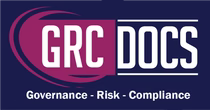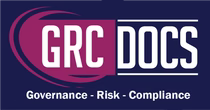SOC2 Software Development Policy Template Download
Introduction
Software is central to modern business operations, and developing it securely is essential for protecting data, maintaining compliance, and ensuring reliable performance. The Software Development Policy provides a structured approach to system acquisition, installation, coding, testing, and risk management, ensuring that confidentiality, integrity, and availability are preserved throughout the Software Development Lifecycle (SDLC).

Step-By-Step Guide For Using the Software Development Policy
Step 1: Define Scope and Applicability
-
-
Apply the policy to all staff, contractors, consultants, visitors, and third parties who interact with organizational systems.
-
Include data, applications, hardware, and records across the development lifecycle.
-
-
Why it matters: A clear scope ensures comprehensive enforcement and avoids blind spots in development security.
Step 2: Assign Roles and Responsibilities
-
-
Management: Oversee implementation, allocate resources, and maintain compliance.
-
IT Department: Manage system development, enforce security, and train employees.
-
Employees: Follow secure practices, maintain confidentiality, and report incidents.
-
-
Why it matters: Shared responsibility ensures accountability and effective governance.
Step 3: Follow Secure Systems Development Practices
-
-
Apply the Secure Systems Development Lifecycle (SSDLC).
-
Integrate security in every stage (DevSecOps).
-
Keep development, testing, and production environments separate.
-
Apply change management to system updates.
-
-
Why it matters: Embedding security early reduces vulnerabilities and improves reliability.
Step 4: Manage Systems Acquisition
-
-
Procure hardware and software only through approved channels.
-
Review all acquisitions for security compatibility.
-
Test new systems thoroughly before deployment.
-
Deploy in alignment with change management policies.
-
-
Why it matters: Secure acquisition prevents introducing unverified or unsafe tools.
Step 5: Ensure Secure Systems Installation
-
-
Maintain accurate, up-to-date licensing for all software.
-
Restrict unauthorized installations and downloads.
-
Remove expired shareware or trial software.
-
Prohibit installation of remote-control or hacking tools unless approved.
-
-
Why it matters: Proper installation practices reduce legal, operational, and security risks.
Step 6: Apply Secure Coding Practices
-
-
Train developers in secure coding techniques (e.g., OWASP standards).
-
Limit source code access based on least privilege.
-
Ensure outsourced development adheres to security standards.
-
Test all code updates thoroughly before production deployment.
-
-
Why it matters: Secure coding ensures applications resist attacks and safeguard sensitive data.

Step 7: Conduct Rigorous Systems Testing
-
-
Perform functional, performance, and security testing.
-
Define acceptance criteria for applications before production release.
-
Ensure bugs, errors, and vulnerabilities are resolved prior to deployment.
-
Follow industry best practices in testing.
-
-
Why it matters: Testing validates security and performance before systems go live.
Step 8: Implement Risk Management in Development
-
-
Conduct bi-annual risk assessments targeting software vulnerabilities.
-
Identify potential threats to sensitive data and remote services.
-
Develop and apply tailored mitigation strategies.
-
-
Why it matters: Proactive risk management strengthens resilience and reduces costly incidents.
Step 9: Enforce Strong Security Measures
-
-
Deploy firewalls, intrusion detection systems, and regular audits.
-
Apply both cybersecurity and physical security safeguards.
-
Protect servers and hardware hosting sensitive information.
-
-
Why it matters: Multi-layered defenses protect systems from both internal and external threats.
Step 10: Apply Access Controls
-
-
Enforce the principle of least privilege for system and data access.
-
Maintain audit trails to monitor access to sensitive information.
-
Review and adjust access permissions regularly.
-
-
Why it matters: Access control ensures accountability and prevents unauthorized data use.
Step 11: Ensure Compliance with Regulations
-
-
Align with the Australian Telecommunications (Interception and Access) Act and the New Zealand Telecommunications (Interception Capability and Security) Act.
-
Follow regulations related to data retention, lawful interception, and privacy.
-
Train staff on compliance requirements for their roles.
-
-
Why it matters: Compliance avoids legal consequences and builds stakeholder trust.
Step 12: Maintain Training, Awareness, and Policy Review
-
-
Provide training on secure software development and legal obligations.
-
Run awareness campaigns to reinforce best practices.
-
Review and update the policy annually or after regulatory or business changes.
-
Approve and document any exceptions at senior management level.
-
-
Why it matters: Training and reviews ensure policies stay effective, while awareness builds a culture of security.
Conclusion
The Software Development Policy establishes a comprehensive framework for building, acquiring, installing, and managing secure software. By following these twelve steps—covering secure coding, testing, risk management, compliance, and awareness—organizations can minimize vulnerabilities, ensure legal alignment, and protect both data and assets. Regular training and reviews ensure long-term effectiveness, while access control and layered security strengthen resilience.





